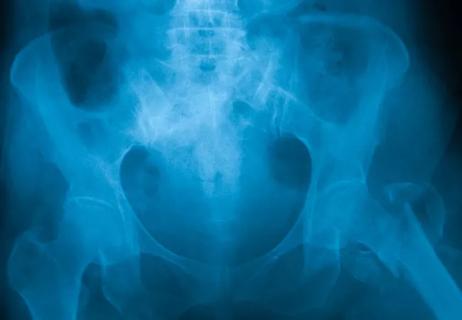Advertisement
Change in PCV13 recommendations

Starting this year, guidelines from the CDC recommended that all adults over age 65 continue to receive the 23-valent polysaccharide vaccine (PPSV23) to prevent pneumococcal pneumonia. The guidelines changed how the pneumococcal conjugate vaccine is recommended (PCV13). Geriatrician Kenneth Koncilja, MD, discusses the change in this Q&A with ConsultQD.
Advertisement
Cleveland Clinic is a non-profit academic medical center. Advertising on our site helps support our mission. We do not endorse non-Cleveland Clinic products or services. Policy
Previously, PCV13 was also recommended for all older adults. Now, the recommendation is for shared decision making between doctor and patient and more selectivity in who receives PCV13. Basically, any older adult with a high-risk chronic medical condition is still is recommended to receive PCV13.
Pneumococcal pneumonia incidence has dropped significantly — ninefold according to the CDC — since PCV13 was introduced in 2010. Specifically, the serotypes of pneumococcus, which reduced, were those covered by PCV13. Children often carry the bacteria, and their continued vaccination has reduced disease burden for older adults. Basically, near universal vaccination of children in the U.S. has reduced exposure for older adults.
The change has given clinicians more flexibility in how we discuss vaccinations. We can prioritize time in the office for the most high-yield disease prevention. For patients, it may be confusing. It’s more difficult to grasp vaccination of another group (children) having such an enormous impact on a different demographic. We need to be more straightforward with patients, and we should be celebrating this as vaccination success.
High risk patients include those:
I like the recommendation to give PVC13 one year before PPSV23; it offers a better immune response. And the good news is that PCV13 is safe with incredibly rare reporting of side effects.
During annual wellness exams is the best time to think about prevention. If patients come in for other reasons, and we have time, I try to address one health maintenance item such as vaccines — including for pneumococcal pneumonia, influenza, zoster or Tdap.
Due to the complexity of patients we face and the care settings we see patients in geriatrics, I am still recommending PCV13 for most of my patients, but I suspect the outcome of less PCV13 serotype pneumonias will continue to improve as vaccination rates in children continue to stay strong.
Yes, the CDC wrote extensively about the decreasing cost-benefit of PCV-13. Essentially, vaccination of all older adults with PCV13 is no longer cost effective as rates of those serotypes continue to decrease.Universal PCV13 was not considered a judicious use of healthcare resources. It’s hard to put money amounts on the benefit of a vaccine; it’s more of a way to compare cost and efficacy with other interventions such as PPSV23.
Advertisement
Advertisement

Center for Geriatric Medicine leads inpatient care of fragility fractures

More clinical research should specifically study the very old

Delayed screenings indicate need for more virtual testing tools

Metrics support proactive cognitive care, demand more research

Case study exhibits difference in diagnosis and treatment

A review of the evidence

Cleveland Clinic geriatrician weighs in on new AA recommendations

What geriatricians can do to stop it